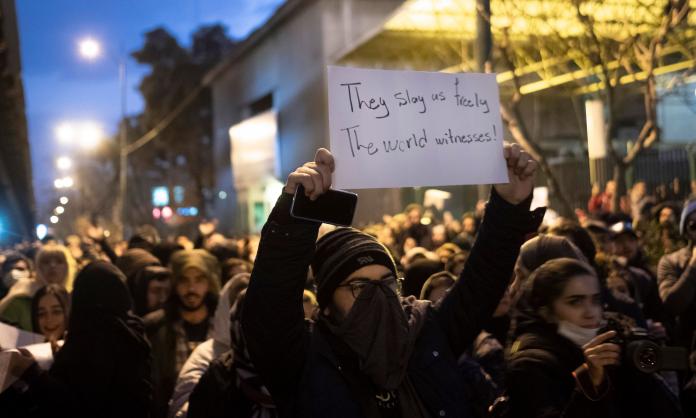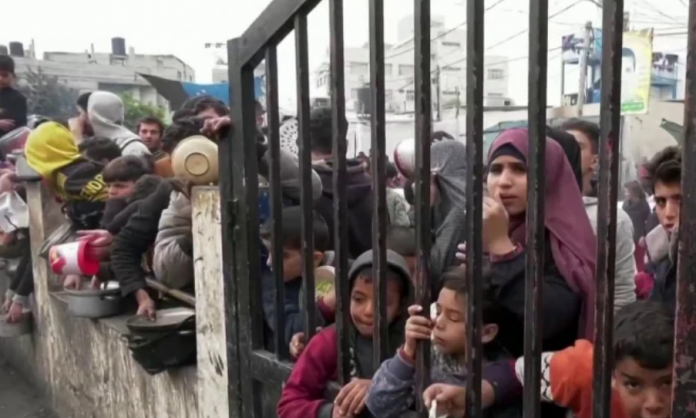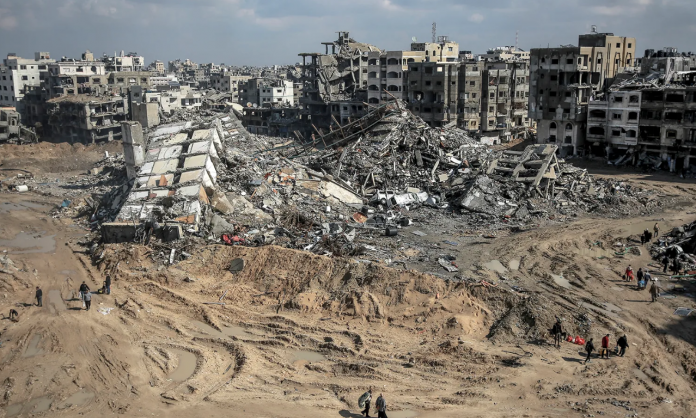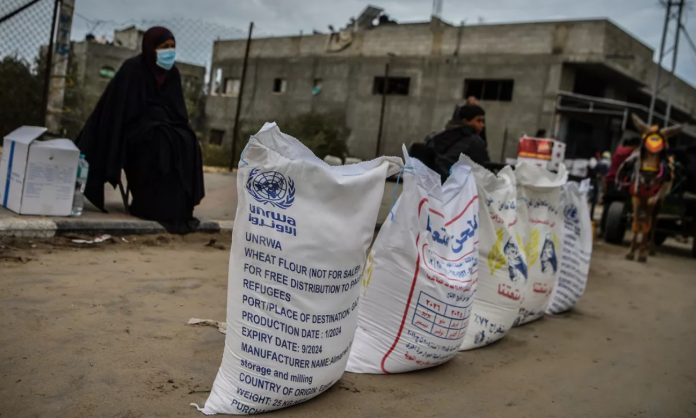Several overlapping crises confront Iran. A third wave of COVID-19 has begun in what is already the worst-affected country in the Middle East. An economic crisis has deepened and been made worse by crippling US sanctions and the pandemic, thrusting masses of Iranians into poverty. And a macabre offensive of government repression, including executions, has been unleashed by the regime against thousands arrested in November 2019, after the most widespread and radical anti-government protests since the Iranian revolution of 1979.
Iran’s economic prospects are dismal. The hardest hit are workers and the poor. Trump’s “maximum pressure” sanctions, a strategy designed to curb Iran’s influence in the Middle East, are hitting harder. Oil output—the core of Iran’s economy and its principal source of revenue—hit its lowest level since records began in 1993 due to the sanctions, but also because of shrinking global demand. Domestic consumption of petrol and other oil-based fossil fuels has also declined.
Inflation has reached staggering highs. In July, consumer inflation registered a 30 percent increase compared to the same time last year. The cost of staples such as butter and eggs has doubled. Eggs are an important source of protein for working-class people, many of whom cannot afford meat. Rents have doubled in recent months. This comes on top of an existing housing crisis in which increasing numbers had been forced into slum dwellings. Reports abound of people moving back home with elderly parents and sleeping on the rooftops of buildings. Ibrahim Razaghi, an economist, estimates that 60 million Iranians—three-quarters of the entire population—live below the poverty line and that 30 million are unemployed. He told state-run website Tabnak that one problem is a systematic “lack of supervision over the economy”.
The desperate struggle to survive is caused by the disastrous state of workers’ wages. A recent International Labour Organization report notes that Iran has one of the lowest national minimum wages in the Middle East. According to Faramarz Tofighi of the Association of Islamic Labour Councils, the average monthly wage is US$80, but a family of three needs at least $300 per month to cover the basics.
The Iranian regime has covered up the extent of the pandemic since the first death occurred in January. A recent BBC Persian investigation revealed that the government’s own records show deaths were nearly triple what it publicly reported on 20 July—14,405 versus almost 42,000. As of 18 September, infections had officially soared to more than 3,000 a day, slightly higher than the second peak in June. In the past 30 days, 5,000 people have died, according to Ministry of Health spokesperson Sima Lari.
President Hassan Rouhani has admitted that the Ministry of Health is trying to find an extra 10,000 hospital beds. US sanctions have been blamed by the regime for a shortage of medical supplies and equipment. This is no doubt true; the sanctions are criminal in their scope. But militant strikes and protests of workers, students and growing sections of the population in recent months are putting the regime in their sights.
It is clear that the initial outbreak was covered up by the regime to avoid harming the turnout for parliamentary elections in February. Nouroldin Pirmoazzen, a former MP and official at the Ministry of Health, told BBC Persian that the regime was “anxious and fearful of the truth”. “The government was afraid that the poor and the unemployed would take to the streets”, he said. The cover-up led to delays of at least a month before the regime introduced any restrictions, by which time the pandemic had spread in all directions from the holy city of Qom, where it originated, to Iran’s largest cities, particularly its economic and political capital, Tehran.
“Those who brought the country to this point don’t pay the price. It is the poor people of the country and my poor patients who pay the price with their lives”, another doctor told BBC Persian. “In the confrontation between the governments of the US and Iran we are getting crushed with pressures from both sides.” This understanding of the role played by the Iranian regime in sacrificing the lives of Iranians to its relentless war for regional power is not a niche opinion. In a recent upsurge of coordinated strikes in core sections of the Iranian economy, workers’ statements and slogans expressed a growing mass consciousness and anger about the nature of the regime that protects a corrupt ruling class and tortures and executes those who are increasingly confronting them both.
A worker from the Haft Tappeh sugar cane factory, a workplace with 5,000 workers in Shush, south-western Iran, and a vanguard of recent workers’ struggles, made this statement during a two-month strike that ended in August: “They [government] have plenty of money to spend on their wars in Syria, all the bosses eat the best food, go on the best holidays, drive the most expensive cars and their kids study at overseas universities, while we don’t even have enough money to eat. This factory belongs to us. The owners are corrupt. We are demanding the government to bring it under public control again with the workers in control of running it”.
● ● ●
Since 2017, a nationwide strike movement has been taking shape. Largely uncoordinated, ebbing and flowing, it is like nothing since the days of the 1979 revolution. It has included workers intermittently exploding on to the streets across the country, burning down government buildings, banks, police stations and cars of the rich and calling for an end to the regime. An explosion of militancy occurred last November when the price of fuel was raised by more than 50 percent. Up to 700 government banks were burned down, and protests took place in every province. Unique in the recent strike wave is coordination between core industries, in which workers are downing tools collectively in solidarity with each other.
Starting in July, the latest nationwide wave of strikes and protests should be situated within a 21st-century labour movement revival. Workers have been waging a heroic struggle for independent unions as their wages, conditions and political rights have come under increasing attack. The Iranian regime has used severe repression, torturing and executing workers. But they continue to fight back.
A critical new development in the recent strike wave is coordination between workers in the oil, gas and petrochemical sector and workers in other industries, with the support of radical university students, pensioners and activists. Reflecting the organising that has emerged, a statement was issued last month by representatives of the workers, students and activists involved in recent strikes, which outlines the basis of their unity and some of their key demands. Part of the statement reads:
“This wave of workers’ strikes is the most extensive and substantial series of labour unrest in Iran in the past few years. For years, workers in Iran have been subjected to some of the most exploitive, oppressive and anti-labour working conditions, while being mercilessly exploited by a host of governmental and private sectors employers.
“In all these years in Iran, workers’ most basic rights have been denied; workers suffer from below poverty wages, unpaid wages, large scale lay-offs and expulsions. They are at the mercy of contractors and subcontractors, subjected to temporary work contracts, forced to sign ‘blank work’ [zero hour] contracts, and face de-regulation of prices, extensive privatisation of education, health care services and housing. These are just some instances of the inhuman circumstances imposed on workers by the owners of capital and the capital-oriented government in Iran.”
Along with the oil, gas and petrochemical workers, the nationwide strikes and protests have included miners, steelworkers, nurses and teachers. Workers from 54 oil, gas and petrochemical facilities, the most powerful workers in Iran and among the most powerful workers in the Middle East, went on a nationwide strike in July and August. In the gas fields, a wave of strikes was triggered when Ebrahim Arabzadeh, a contract worker at Mahshahr petrochemical complex, died from heat exhaustion at work on 28 July in 50-degree heat. The strikers included builders, electricians, welders, pipe fitters and other tradespeople working for employment agencies and gang masters. Workers presented a list of demands to the contracting companies. By 1 August, 10,000 workers were on strike.
Nurses across the country have been staging protests outside government offices and striking in the recent wave, alongside teachers, who have been on nationwide strike several times in the past two years, facing down police repression and arrest. Nurses in Isfahan, a city in central Iran, have been particularly active. At a recent anti-government protest, a nurse made this statement:
“They told us that we need to work harder and longer during the pandemic and we would get a corona supplement. They haven’t paid our overtime [or] the corona supplement for months now. While prices keep increasing, my family is sick and starving. Is this justice? Only one-tenth of the budget that was allocated to the hospital has been given to the nurses. Why do they differentiate between what the doctors get paid and what we get paid? We work just as hard as them.”
The workers of Haft Tappeh sugar cane factory held the most prolonged and militant strikes in Iran in recent years and have become an inspiration to workers across the country. Workers at the factory in Khuzestan province went on strike on 12 June, demanding unpaid wages, a renewal of their social security entitlements and the reinstatement of workers fired for protesting, including prominent activist Esmail Bakhshi, who has been detained several times in recent months. Workers at Haft Tappeh have a long history of struggle. After two decades of arrests, torture and intimidation of their families, the workers managed to set up an independent union. But the factory was privatised in 2015—many lost their jobs and wages, and conditions deteriorated. A central demand of the workers is for the factory to be placed into public hands, with a workers’ committee in charge.
Khuzestan province, in the west of the country, is the major oil producing region. Repressing workers here has been a priority for the regime. More than 30 percent of its population is Arab (compared with only 2 percent in the whole of Iran) and the regime has made them a target of severe repression, employing a divide and rule strategy among the workers. Reflecting the advanced political consciousness of the workers at Haft Tappeh, a worker leader made a statement at the beginning of the strike about the importance of unity in the face of government repression and racist scapegoating of ethnic minorities:
“The only way we’re going to win anything is stay united, united, united—no matter what our differences might be. When we move forward as a united force, then everyone will benefit. We must never permit ourselves to make decisions individually. All decisions need to be made collectively, about the demands we want to make and about who we make these demands of. The bosses want us to be at each other’s throats, creating divisions between Desvul and Arab, Shaur and Lur, Arab and Lur. We have now been going on strike every month for the past four years. Enough is enough. We must have solidarity and stay united if we are to win. Haft Tappeh has been looked upon as a model for successful strike action by workers around the world. Why? because we’ve managed to maintain unity and solidarity.”
On 24 June, workers marched on the grounds of the factory shouting slogans such as “Workers of Haft Tappeh! Unite! Unite!” and “No to Privatisation!” On 30 June, they and their community took their protests into the streets of the city of Shush, shouting “Workers of Haft Tappeh! Unite! Unite!”, “Long live unity and solidarity of workers against exploitation!” and “Return all embezzled wealth to the workers!” On the 31st day of the strike, more workers joined the protest in the city, this time demanding the release of all imprisoned workers following arrests the day before. Their slogans were: “Free all jailed workers!”, “Free imprisoned Haft Tappeh workers!”, “Workers would rather die than succumb to a life of indignity!” and “Workers are in prison, while the oppressors run free!”
The intimidation and repression of these workers and their families by the regime have been relentless. During recent anti-embezzlement trials of the factory managers, a representative of the fired Haft Tappeh workers, Mohammad Khanifar, appeared in the Tehran court. A few days later, eighteen rounds of ammunition were fired at his father’s house in Shush.
In another criminal act, the house of Haft Tappeh workers’ representative Yousef Bahmani was set on fire by his employer’s agents. This is not the first and certainly not the last threat that the exploiters of Haft Tappeh have made to stifle workers’ representatives. For the past three years, more than 50 Haft Tappeh workers have been detained in prison. They have refused to bend to the violence of the bosses and their backers in the regime. Their defiance and militancy have set the tone for what in recent times has been a marked escalation in the militancy and growing organisation of powerful sections of the working class in Iran.
The support they have received from other workers and community members provides an insight into how important these struggles have become in a more generalised sense. Taxi drivers have been writing on their cars that rides are free for the workers of Haft Tappeh. Similar signs have been visible at some barber shops or grocery stores. Hair has been cut for free and food has been made accessible on credit until workers receive their salaries.
● ● ●
The regime’s response to the increased breadth and militancy of strikes and anti- government protests has been to escalate a gruesome and systematic campaign of terror against protesters and worker militants. Amnesty International issued a report in early September detailing the heinous acts of torture, including sexual assaults, electric shocks, floggings, waterboarding, forced administration of chemical substances, disappearances, arbitrary detention and executions of protesters rounded up in their thousands from nationwide protests in November last year.
The extent to which the regime has increased its terror against increasingly determined and explosive anti-government strikes and protests was revealed to the world in the past month with the highly publicised execution of Navid Afkari. Navid was a working-class plasterer and Olympic wrestler who participated in bazaar strikes last year. His execution was extremely distressing—Navid was brought to the point of death, then his executioners kept him alive for a few minutes before finally killing him. The current wave of executions is a sign of the regime’s fear. In June, Hashem Hashemzadeh Herisi, a member of Iran’s Assembly of Experts, warned: “The current situation of the society is unbearable. The distance between the people and the establishment grows every day. The situation is very critical. We can’t sit by and let the establishment die”.
Quite literally, the establishment is killing and sacrificing the lives and livelihoods of millions of Iranian workers, the poor, pensioners and students to save itself, its wealth and its power. So far, it has not stopped a nationwide strike and protest movement growing more combative, resilient, strategic and organised as the crisis deepens. But the millionaire clerics and ruthless military generals who run Iran have no intention of reining in their expansionist and expensive ambitions to consolidate their power across the Middle East. That means endless pits of money for guns and bombs, proxy militias in Lebanon and Syria, interventions in Iraq, and missile and rocket systems to strengthen themselves against their regional rivals. The regime will not spare a dime from its war chest for workers and the poor unless it is forced to.
If the recent strikes and protests are a portent of what is to come, the regime has a fight on its hands. Support for both the moderate reformist and conservative hardliner factions of mainstream politicians in Iran has collapsed after years of betrayals. A space exists politically, in which some sections of workers and students with radical politics have begun to organise. The battle ahead is big, but it has begun.











